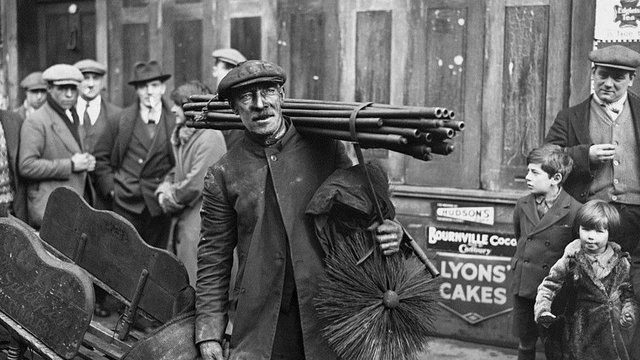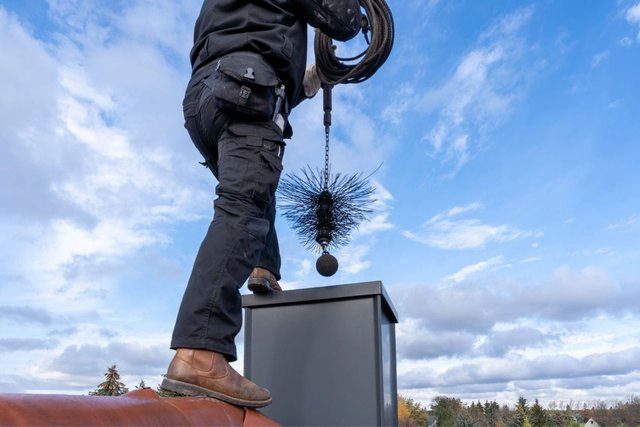Strange customs for good luck are not uncommon around the world, but Europeans have a particularly unique belief regarding chimney sweeps.
With most of its area located in temperate zones, Europe experiences quite cold winters. One of the most important items in ancient homes across the continent was the fireplace and chimney. However, their significance goes beyond just keeping warm; they carry rich cultural meanings and special beliefs.

Chimney sweep with his tools.
If you’ve had the chance to watch Disney’s 1964 film Mary Poppins, you might remember the scene featuring the chimney sweep played by Dick Van Dyke, who cheerfully sings: “One sweep is one luck, how wonderful!”.
However, this character is not just singing whimsically; in some regions of Europe, there is a genuine belief that chimney sweeps bring good fortune.
According to European folklore, one can even make a wish while standing next to a working chimney sweep to have their wish come true. Furthermore, these chimney sweeps are not “genies” or sorcerers; rather, it is believed that there are specific rituals to successfully attract good luck.
Legend has it that this story likely originated during the reign of King George III of England (1760-1820). One day, while the king was riding in his procession, a dog crossed his path and bit the horse’s ankle, causing it to rear up.

Painting of King George III.
Before the king could fall and the country faced a tragic mourning, a chimney sweep became a “hero” by jumping out of the crowd, grabbing the reins to calm the horse, and saving George III.
After regaining his composure, the king did not forget to thank his savior and even went so far as to declare that chimney sweeps were “lucky spirits.” From that day forward, it became a tradition to invite these chimney sweeps to weddings to seek their blessings, believed to ensure the couple’s happiness until old age.
Although in contrast to the black cat—often seen as a “foe” of luck in many European cultures—these “lucky spirits” do not particularly enjoy this belief.
In times before modern heating systems, homes in Europe relied on chimneys and fireplaces to stay warm. During this period, chimney sweeps were highly valued and often busy (much like air conditioning repair workers today). They typically wore all-black clothing with a white hat (which didn’t stay white for long), along with belts for their tools and paperwork.

Chimney sweep and his characteristic brush.
The tools of a chimney sweep include a rope (for climbing) and a steel brush. They often had to crawl into dark, narrow, and smelly chimneys to clean them without any protective gear such as gas masks, goggles, or gloves… In general, it was a grueling job that people often did out of necessity rather than choice.
After a day of wrestling with foul-smelling and toxic chimneys, you certainly wouldn’t want anyone poking you, rubbing your sleeve, or looking at you while making a wish for themselves. Yet, that is exactly what people have done for centuries when a chimney sweep appeared.
Superstitious individuals believe that rubbing a button and making a wish upon seeing a chimney sweep, or touching one of their dirty sleeves, will bring good luck (or even turn spoken wishes into reality). This can be quite bothersome, especially since they often do not receive extra payment for this unexpected service.





















































